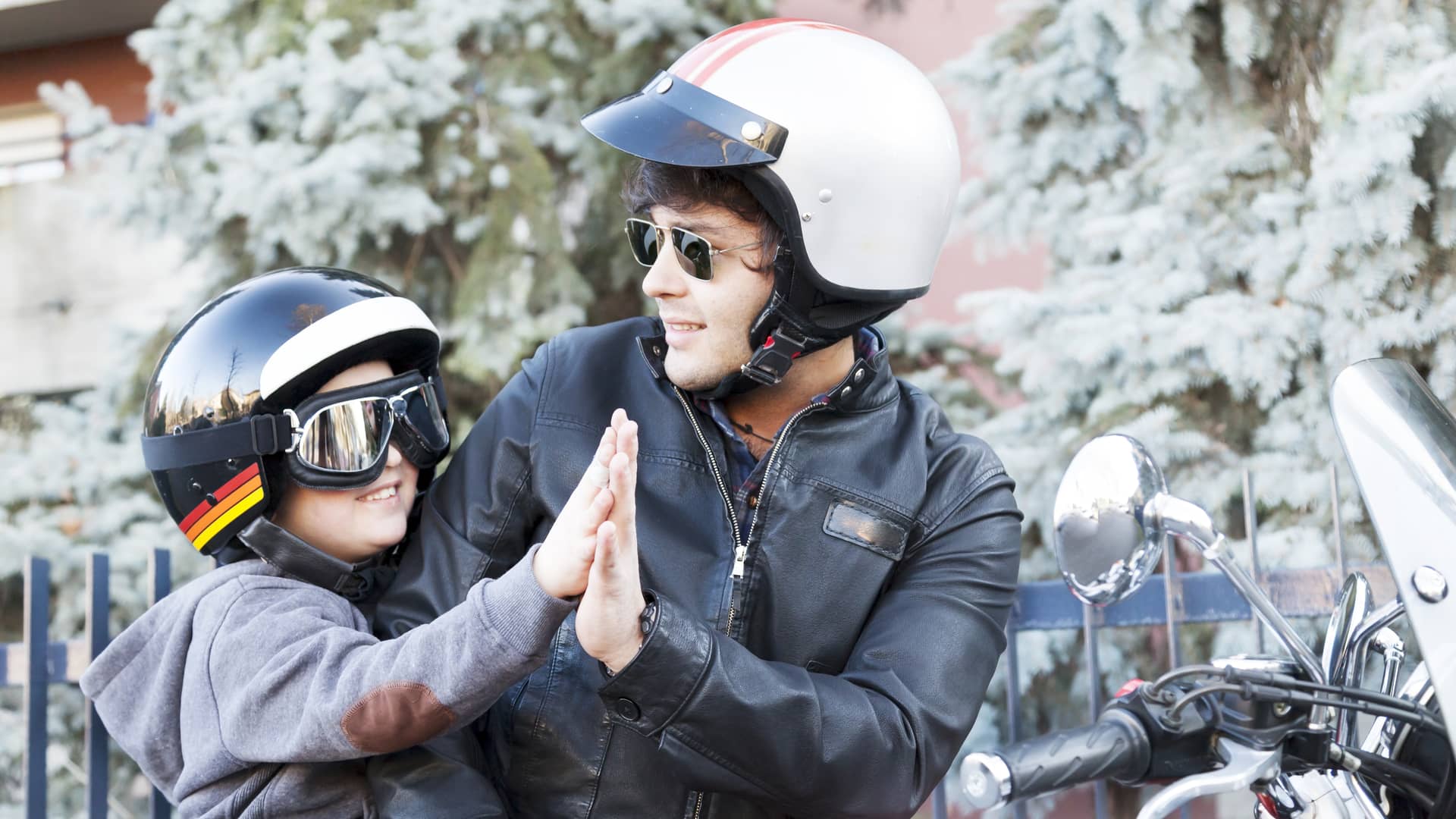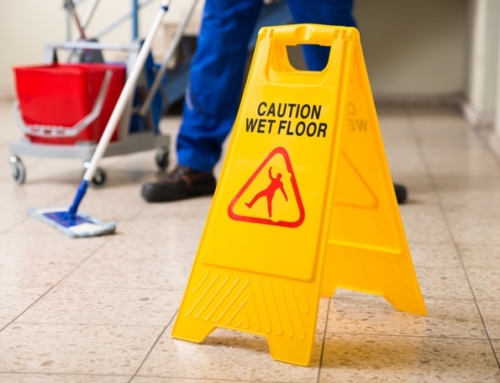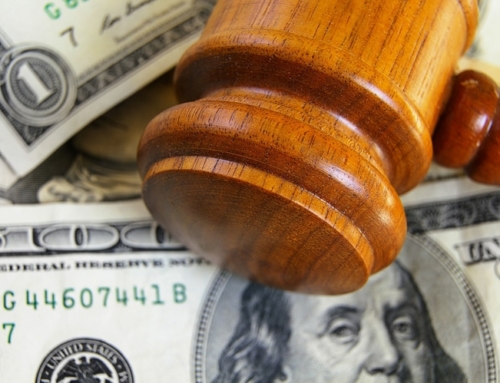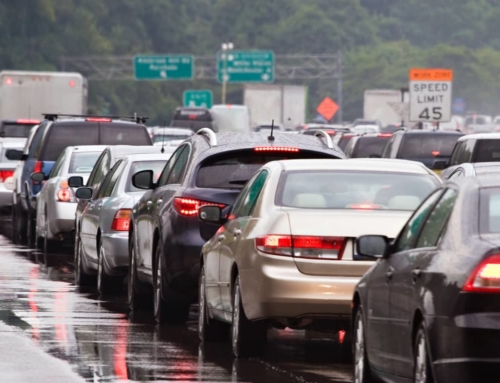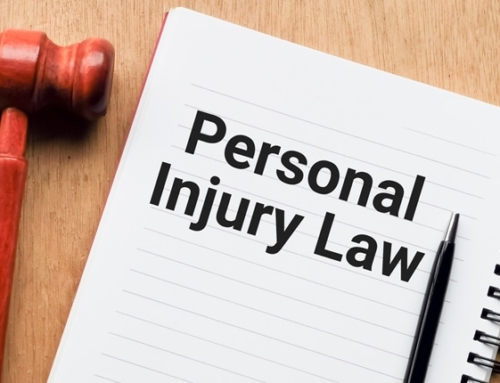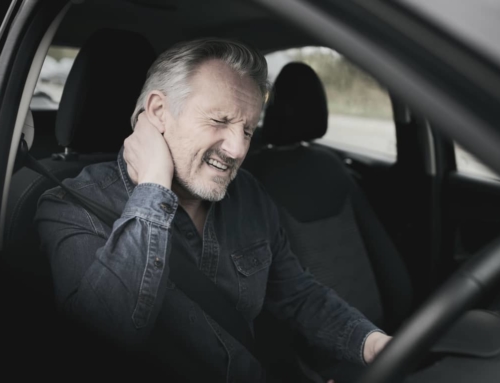Wanting to take your kid out for a ride on your motorcycle is understandable, but you should not head out right away. You must first understand a few important matters, such as the legal age for a child to ride on the back of a motorcycle. Failing to grasp those important matters can lead to serious trouble. Motorcycle safety is something you should always take seriously. That should be an even stronger point of emphasis if you intend to travel with your child.
After reading this article by San Antonio motorcycle accident lawyer, Stacey Barrus, you will find out exactly when your child can start riding on your motorcycle together with you. We will also discuss some safety tips to keep in mind if you are taking to the road with your kid in the passenger seat.
Read on and discover how you can make your motorcycle trips with your child as safe as possible!
When Can Your Child Start Riding on Your Motorcycle?
Let’s get to the heart of the matter right away. When can your child start riding on your motorcycle as a passenger?
Well, that depends on where you live, forty-five of the fifty states have imposed no age restrictions on motorcycle passengers. If you want to take your child with you for a ride around the neighborhood, you can do so regardless of how old they are. There may be rules regarding the gear they must wear, but riding is allowed.
Whether or not your child will be safe on your motorcycle will be your call to make if you live in one of those states. The remaining five states have minimum age requirements for motorcycle passengers.
In Hawaii, kids can only be motorcycle passengers when they reach seven years old. Arkansas hikes that minimum age requirement up to eight. Louisiana and Washington State have set their minimum age requirements at five.
The only state we have not highlighted yet is Texas. Texas’ minimum age requirement for child passengers is also at five. Technically, a child under five years old can come along with you for a motorcycle ride, but they cannot be behind you. Instead, you will need to accommodate them by attaching a sidecar to your motorcycle.
Preparing Your Child to Be a Motorcycle Passenger
Your child may not be eligible to be a passenger on your motorcycle yet, but they could be shortly. If you intend to use your motorcycle as your primary means of traveling with your kids, they need to be prepared. The last thing you want is to be in a motorcycle accident with your kid.
So, how should you go about preparing your kid to become a motorcycle passenger? Ideally, that involves getting the appropriate gear for your child and teaching them to be a safe rider.
Do not even think of riding a motorcycle together with your child until you have prepared them properly. No matter how safe a rider you think you are, you still cannot predict how your child will behave. It is best to get them ready first, so you do not run into problems on the road.
Getting the Right Pieces of Safety Equipment for Your Child
Preparing your child to become a motorcycle passenger means purchasing age-appropriate gear for them. You may already be familiar with the recommended pieces of safety equipment as an adult motorcycle rider, but your child’s needs are different. This is not a situation where hand-me-downs will suffice.
Buying new gear for your child is a must, so they are as safe as possible during your rides. Let’s go over the different items you should look to purchase for your young passenger in this section of the article.
Motorcycle Helmet
First and foremost, you need to purchase a motorcycle helmet for your kid. Texas has a law that requires young passengers to wear a motorcycle helmet. While selecting a motorcycle helmet suitable for your child, remember to look for the Department of Transportation’s sticker. You do not need to purchase a helmet with a DOT sticker, but it is highly recommended.
Helmets that feature DOT stickers have met federal safety standards. You can feel more confident in the protection they provide to your kid. The style of the motorcycle helmet is also something you must pay close attention to. A full-face motorcycle helmet is a good choice for a child. Full-face helmets provide good coverage without being too stuffy. Remind your kid to keep the visor down to protect them even further.
In terms of styles to avoid, you should steer clear of half helmets and open-face helmets. These helmet styles leave a lot to be desired when it comes to coverage. On top of that, they do not have chin guards that could potentially cushion a fall. Do not even bother with those helmets because they are not good for kids.
Lastly, you need to get the size of your child’s motorcycle helmet right. You do not want their helmet feeling loose because that could distract your child.
According to the National Highway Traffic Safety Administration, the measurement for the helmet that you need is right at the brow. Measure from there to the thickest point on the back of your child’s head to get the correct number.
The helmet should be a bit tight but still comfortable. It should also remain stationary even as your child moves their head around.
Motorcycle Seat
The next item you must have if you are planning to ride a motorcycle with your child is a suitable seat. You may have thought of using a car seat as the makeshift motorcycle seat for your child. It may seem like a fine idea at first, but the reality is quite different.
The main issue with a car seat is stability. You are using straps to connect that car seat to your two-wheeler. Even if those are heavy-duty straps, they can still come loose if your motorcycle bumps into something forcefully. Car seats also tend to be bulky. They can distract you from the road or make you uncomfortable while driving.
These reasons above highlight why you should not use a car seat on your motorcycle. Instead of a car seat, you should reserve a fixed seat for your kid. Fixed seats are safer and more comfortable for children. Position the fixed seat behind you, and your child should use it properly.
Safety Harness
In an effort to prevent an auto accident, you may instinctively hit the brakes hard as a car zips in front of you. Because of that, your child’s grip on you or the motorcycle may loosen, and they may fall off. You can imagine how an incident like that can easily turn tragic.
Children are not known for their grip strength, so you need to give them something to grab, so they do not fall off the motorcycle. That something in question can be a safety harness. The driver wears a safety harness that wraps around their body; it also comes with holes that the child can grasp firmly. You may even find some harnesses that can also wrap around the passenger.
There is no law requiring the use of a safety harness if you are riding a motorcycle with your child but wearing one is a good idea, nonetheless. Look for a harness that is easy to use for both you and your kid and make your shared trip safer in the process.
Pants
Selecting the pair of pants your child will wear while riding on your motorbike is also important. The pants your child is wearing should fit properly. They should not hang down to a point where they could get in the footholds.
As for the material makeup, pants made from thick denim will work, but you can splurge on motorcycle pants if you prefer. You need their pants to be on the thicker side, so they protect against debris and the hot parts of your motorcycle.
Jacket
A good motorcycle jacket should protect your child if they happen to fall off. Instead of your kid’s arms getting all scratched up, the jacket should bear the brunt of that. You can find motorcycle jackets for kids if you look online. If you would rather not splurge on that piece of protective clothing, a thick denim jacket can also provide the protection your child needs.
Boots and Gloves
Finally, you should also pick some new boots and gloves for your kid before you take them on their first motorcycle ride. The boots you are getting will ideally have no laces that could dangle and get caught in the motorcycle. You also want those boots to ride fairly high on your child’s legs so they can provide ample support.
Giving your child some gloves should make it easier for them to grip the harness. The gloves can also protect their hands if they happen to fall off the motorcycle and slide on the road.
Essential Motorcycle Riding Tips for You and Your Child
You now have all the pieces of equipment that your child will need for their upcoming ride on your motorcycle. Does that mean they can ride with you now? For now, you should hold off on that. Before you let your child hop on, you need to give them some pointers on how to be a good passenger. You can also benefit from learning how the riding experience will change if you are taking a young passenger along for your trip.
Read up on those essential tips below.
Select the Right Riding Spot for Your Child
According to the Texas Department of Licensing and Regulation, a child rider should always be placed immediately behind the motorcycle driver. A child should never be seated in front of the driver because they can hinder you; the rider may have a hard time driving with a child between them and the controls.
Furthermore, children are more vulnerable seated in front of the rider. They could bump hard into the controls if the driver brakes and easily lose their balance in that spot. Give your child a more stable and safer riding spot by placing them behind you. Count this as another reason you should know the legal age for a child to ride on the back of a motorcycle.
Tell Your Child to Grip Firmly
Remind your child to hold on tight throughout your ride. Tell them to grab the harness tightly if you are using one. If not that, then they should keep their arms around you at all times. Do not forget about foot placement as you are instructing your child how to ride properly. Instruct them to keep their feet in the provided footrests to stay balanced.
Instruct Your Child to Avoid Sudden Movements
Sudden movements can jeopardize the balance of your motorcycle. The motorcycle may start to wobble because of those movements and that can lead to trouble. Tell your child to stay as still as they can for the duration of the ride. With no sudden movements serving as disruptions, you should have little trouble controlling your motorcycle.
Drive Your Motorcycle a Bit Slower
You should also adjust your style of driving if you have a young passenger with you. One key adjustment you should make is driving slower. Even though your passenger is a small child, they can still add a considerable amount of weight that could throw off the balance of your motorcycle. Drive slower so you can handle that added weight better.
Give Yourself a Larger Allowance before Merging or Stopping
Giving yourself a larger allowance before merging or stopping is also crucial if you are riding together with your child. The maneuvers you used to make easily while riding solo will become harder to pull off if you have a passenger. By giving yourself more room to maneuver, you can avoid potentially hitting a nearby vehicle.
Riding on a motorcycle together with your child is possible as long as they are at the right age. You can also keep your child safe during that ride by heeding the tips highlighted in this article.
You will need the services of an experienced attorney to claim the compensation you deserve following your motorcycle accident. Partner with our San Antonio personal injury lawyers and we will help you claim the compensation that is rightfully yours.
